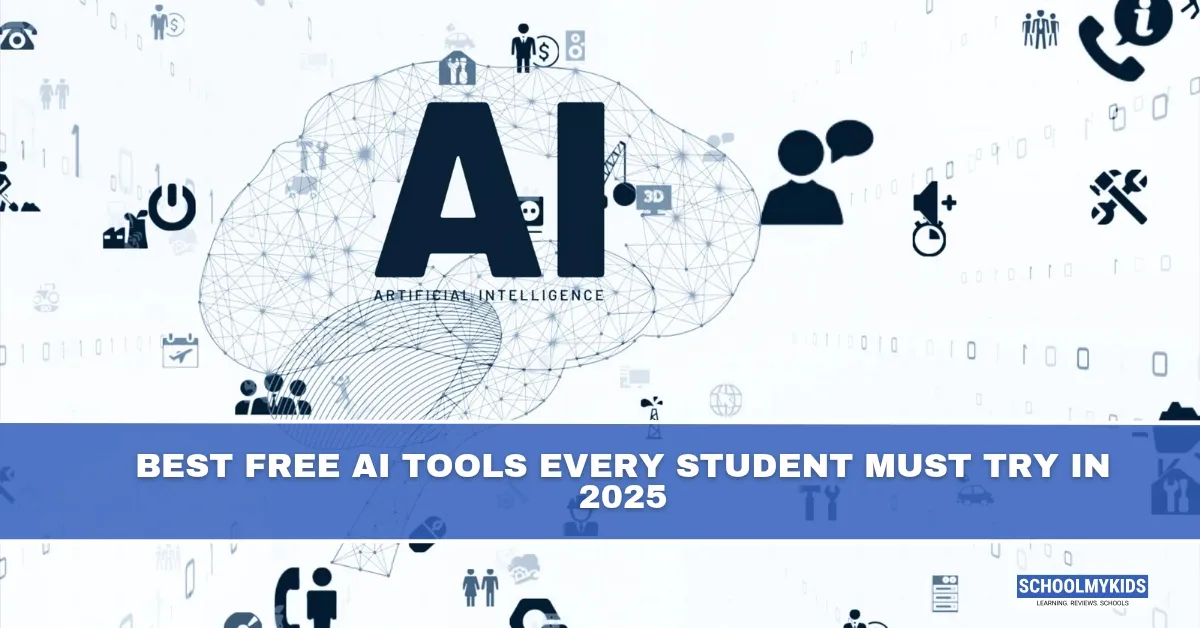Artificial Intelligence (AI) is no longer a futuristic concept—it has become an everyday companion for students. From generating study notes to helping with research, AI tools are transforming how students learn, organize, and succeed academically. The best part is that many powerful tools are free to use, making them accessible to everyone.
Below is a list of the best free AI tools every student should try in 2025.
ChatGPT (Free Version)
ChatGPT has become a student’s personal tutor. With its ability to explain concepts, generate essays, solve math problems, and even prepare for exams, it is a must-have tool. The free version is still highly effective for quick learning support.
Use Cases for Students:
- Summarizing long chapters into easy notes
- Practicing viva questions
- Getting explanations in simple language
- Drafting essays or creative writing tasks
Grammarly
Clear communication is essential for assignments, reports, and emails. Grammarly’s free version checks grammar, spelling, and basic style. Its AI suggestions help students write polished content without errors.
Why It’s Useful:
- Corrects grammar and punctuation instantly
- Improves clarity in essays and reports
- Offers vocabulary enhancement suggestions
Notion AI (Free Plan)
Notion has quickly become a favorite among students for note-taking and project organization. With AI integration, it can generate study summaries, manage to-do lists, and create personalized study planners.
Key Benefits:
- AI-assisted note summarization
- Smart task reminders for assignments and exams
- Collaborative features for group projects
QuillBot
QuillBot is an AI-powered writing tool that helps students paraphrase, summarize, and improve their writing. The free version allows paraphrasing with different modes, making it useful for assignments and research.
Student Applications:
- Paraphrasing difficult text
- Summarizing lengthy articles
- Enhancing essay introductions and conclusions
Otter.ai
Otter.ai is a free AI tool for transcribing lectures, seminars, and meetings. Students can record live sessions and later convert them into searchable, editable notes.
How Students Can Use It:
- Record classroom lectures
- Generate transcripts for revision
- Share notes with classmates
Canva AI (Free Plan)
Visual presentations are a big part of academic life. Canva’s AI features—such as AI design suggestions and Magic Write—help students create professional-looking slides, posters, and reports quickly.
Why It’s a Must-Try:
- Free templates for projects and presentations
- AI-generated text and design suggestions
- Easy drag-and-drop editing
Scholarcy
Scholarcy is an AI-powered research assistant that condenses academic papers into simple summaries. Students preparing for projects, dissertations, or journal clubs will find it invaluable.
Benefits:
- Summarizes lengthy research papers
- Highlights key points and references
- Saves time during literature review
Elicit (AI Research Assistant)
Elicit is a free AI tool designed for academic research. It helps students find relevant papers, extract insights, and organize references efficiently.
Student Uses:
- Searching for research-based evidence
- Extracting data and key findings
- Managing academic sources
Slidesgo (AI Presentation Maker)
Slidesgo offers free AI-assisted templates for Google Slides and PowerPoint. Students can generate beautiful presentations in minutes.
Highlights:
- Ready-to-use templates for academic presentations
- AI-customized slide structures
- Saves time on design
Perplexity AI
Perplexity is an AI-powered search engine that provides concise, reliable answers backed by sources. It is ideal for students who want quick, fact-checked research help.
Advantages:
- Direct, source-based answers
- Summaries for complex topics
- Useful alternative to Google for academic research
Final Thoughts
In 2025, students have more free AI tools at their disposal than ever before. From writing assistants like Grammarly and QuillBot to research helpers like Scholarcy and Elicit, these tools can save time, improve productivity, and simplify learning. The key is to use them wisely—not to replace genuine learning, but to enhance it.
By integrating these free AI tools into daily study routines, students can stay ahead, work smarter, and unlock new opportunities for academic success.








Be the first one to comment on this story.